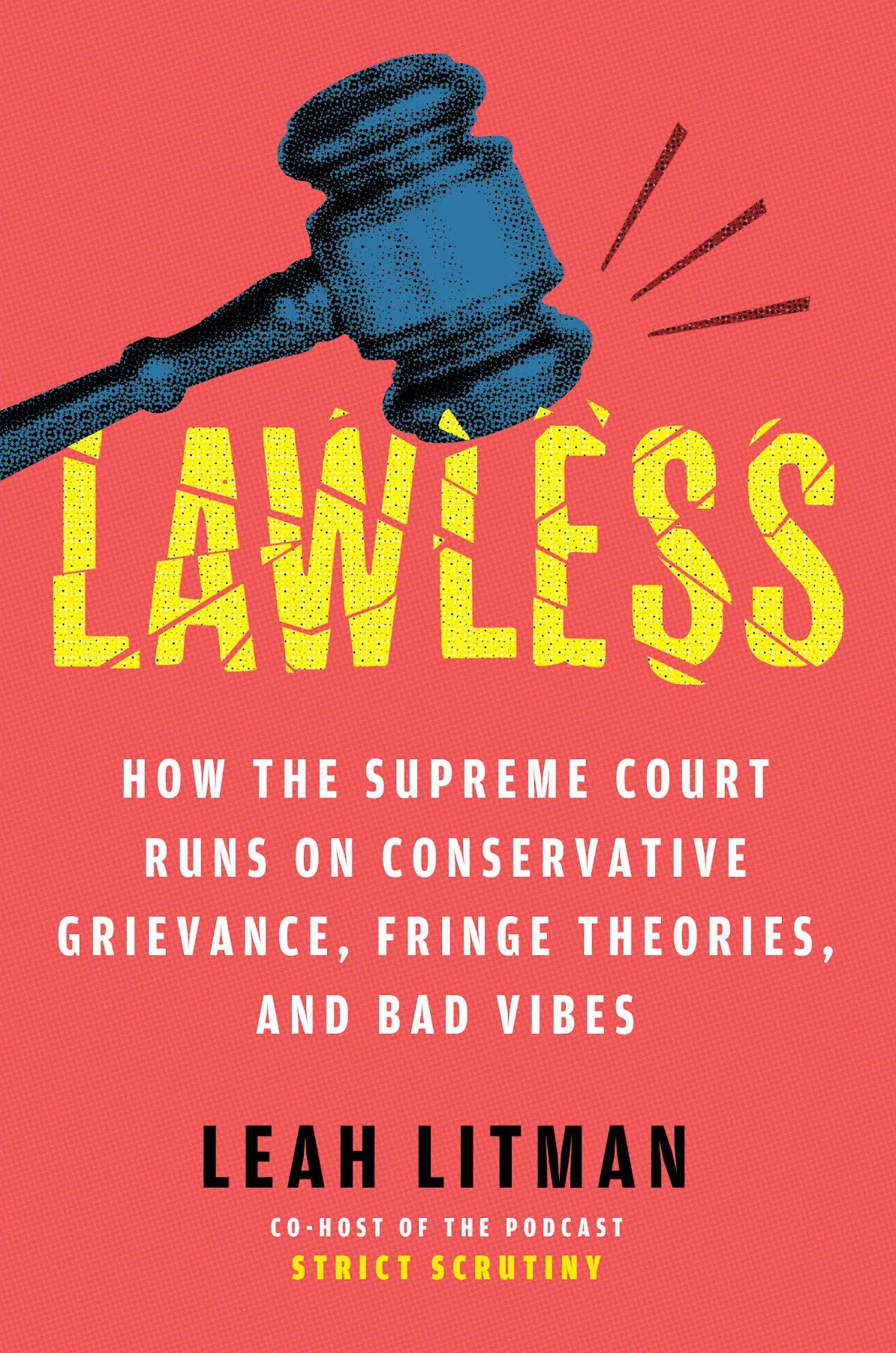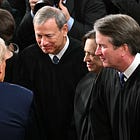Law for lawlessness
The Supreme Court's Trump v. Wilcox ruling reveals its own outlawry while enabling the administration's.
Leah Litman is a professor of law at the University of Michigan Law School and author of the new book “Lawless: How the Supreme Court Runs on Conservative Grievance, Fringe Theories, and Bad Vibes” — an assessment of the Court’s supermajority and how it serves Republican interests instead of the public good. You can buy the book here.
Last Thursday evening, the Supreme Court all but demolished the legal basis for the independent agencies that are part of the modern administrative state.
In a brisk four paragraphs, only two of which contained any attempt at legal reasoning, the Court’s six Republican justices allowed the president to fire members of the National Labor Relations Board (NLRB) and Merit Systems Protection Board (MSPB) in violation of federal law. The decision highlights the lawlessness of the Court and is likely to further embolden a president who is very keen to place himself above the law.
The Court’s order in Trump v. Wilcox allows the president to violate the federal laws that prohibited him from removing NLRB and MSPB members without cause for doing so. Laws that insulate the heads of multimember commissions such as the NLRB are a common feature of the administrative state. The Supreme Court upheld one such law almost a century ago in Humphrey’s Executor v. Federal Trade Commission, the case that now undergirds modern independent agencies.
It was therefore a little surprising to read the Supreme Court’s order in Wilcox, which permits the president’s statutorily prohibited removal of officers on multi-member commissions, and see no mention of Humphrey’s Executor, the decision upholding statutes that prohibited such removals. Humphrey’s didn’t appear until the dissent.
But this dismissal of important precedents structuring modern society and government has become a hallmark of the Roberts Court. In a decision few years ago, the Court confidently declared that an earlier precedent on the Establishment Clause had been “abandoned.” Did that mean overruled? Unclear, but it at least meant the Court didn’t have to follow it!
Last term, the Court formally overruled the Chevron doctrine that had allows agencies to interpret ambiguous statutes they administer, as the Republican Justices turned tail on a a precedent they had previously embraced. The year before that, the Court announced that the time had come to end affirmative action programs in higher education, as if it was just closing up shop on the precedents upholding such programs.
🏛️ ⚖️ 🏛️ With corporate outlets obeying in advance, supporting independent political media is more important right now than ever. PN is possible thanks to paid subscribers. If you aren’t one already, please click the button below to sign up and support our work. 🏛️ ⚖️ 🏛️
Giving away the game
In Wilcox, the Republican Justices announced a new rule would take the place of Humphrey’s Executor and the statutes that have been built around it. The Court doubled down on a muscular version of the unitary executive theory — the idea that the president, and president alone, possesses all of the executive power, and that such power also gives the president the authority to control anyone else exercising it through the power to remove them.
These same ideas featured prominently in the Court’s catastrophic immunity decision from last summer — one that placed the president above the law when exercising his official duties. Apparently, the last few months haven’t given the justices pause about the expansive version of executive power they adopted in that case.
The unitary executive theory has long been a darling of the Republican legal movement. Indeed, a young John Roberts was peddling it, including the idea that the president must be able to remove the heads of statutorily independent agencies, when he was a lawyer in the Reagan administration. Similarly, Brett Kavanaugh made pretty clear that he thought Humphrey’s Executor was wrongly decided when a judge on the court of appeals before his elevation to the Supreme Court.
But the theory ginned up by Republicans to bless their expansive vision of presidential power has some real shortcomings. Taken for all its worth, it could allow the president to blow up the US economy by firing the chair of the Federal Reserve Board, another multi-member commission. Or it could at least allow the president to bully the Fed to do to the economy with interest rates what the president has done to it with tariffs.
So before they could make their preferred (crank) theory the law, the Republican justices had to announce an exception to it. Sure, the president can fire the head of any agency … just not the Fed, they said. The Fed is just, well, different, they declared, for, um, reasons: “The Federal Reserve is a uniquely structured, quasi-private entity that follows in the distinct historical tradition of the First and Second Banks of the United States.”
That howler of a line smacks of a gerrymandered exception to avoid the insane consequences of their new legal rule. The reality is, to the Court, the Fed, interest rates, and the US economy are just too important to subject the whims of a president.
As Justice Kagan quipped in an oral argument from a few years ago when a litigant attempted to press a similar exception to a proposed rule, the Fed is just “too important, or whatever.” Which is why, of course, Congress insulated the Fed and other agencies from presidential removal in the first place.
The rule of law (some exceptions apply)
This isn’t the first ad hoc exception the Roberts Court has made for this president.
When the Court cleared the way for Donald Trump to appear on the ballot notwithstanding his role in January 6, they did something similar. The problem for Trump’s candidacy arose because Section 3 of the Fourteenth Amendment contains a qualification for office: It prohibits persons who engaged in insurrection or rebellion against the United States from holding office. So the Court declared that Section 3 so happened to be one qualification for office that states could not enforce against candidates on their own — they could enforce term limits or age requirements — just not the insurrection one. How convenient!
This kind of reasoning goes back further than that case. In Bush v. Gore, when the Republican justices ordered the state of Florida to certify Bush the winner of the state’s electoral votes, they declared that their decision was good for that case and that case only.
It is frightening to know that this Court has the president’s back in important respects as he bulldozes his way through even more laws. As Justice Kagan observed in her dissent, the Court’s order “allows the President to overrule Humphrey’s by fiat.” The President “bet[] that the “Court would acquiesce.”
And they did — once again using the law to enable Republican lawlessness.
That’s it for today
We’ll be back with more tomorrow. If you appreciate today’s newsletter, please buy Leah’s book. And if you’re a regular Public Notice reader but haven’t yet signed up for a paid subscription, please support our work by clicking the button below.
Thanks for reading, and if you’re in the states, I hope you’re having a nice Memorial Day.







Gangway, here comes the Unitary Executive version 5.0. Thanks so much, Roberts Court.
One has to wonder whether this brave decision is akin to Snyder v. U. S. in which the court redefined bribery as gratuity (take that, Clarence Thomas critics!). Here, the Court’s saying, “Daddy, don’t fire us … please.”